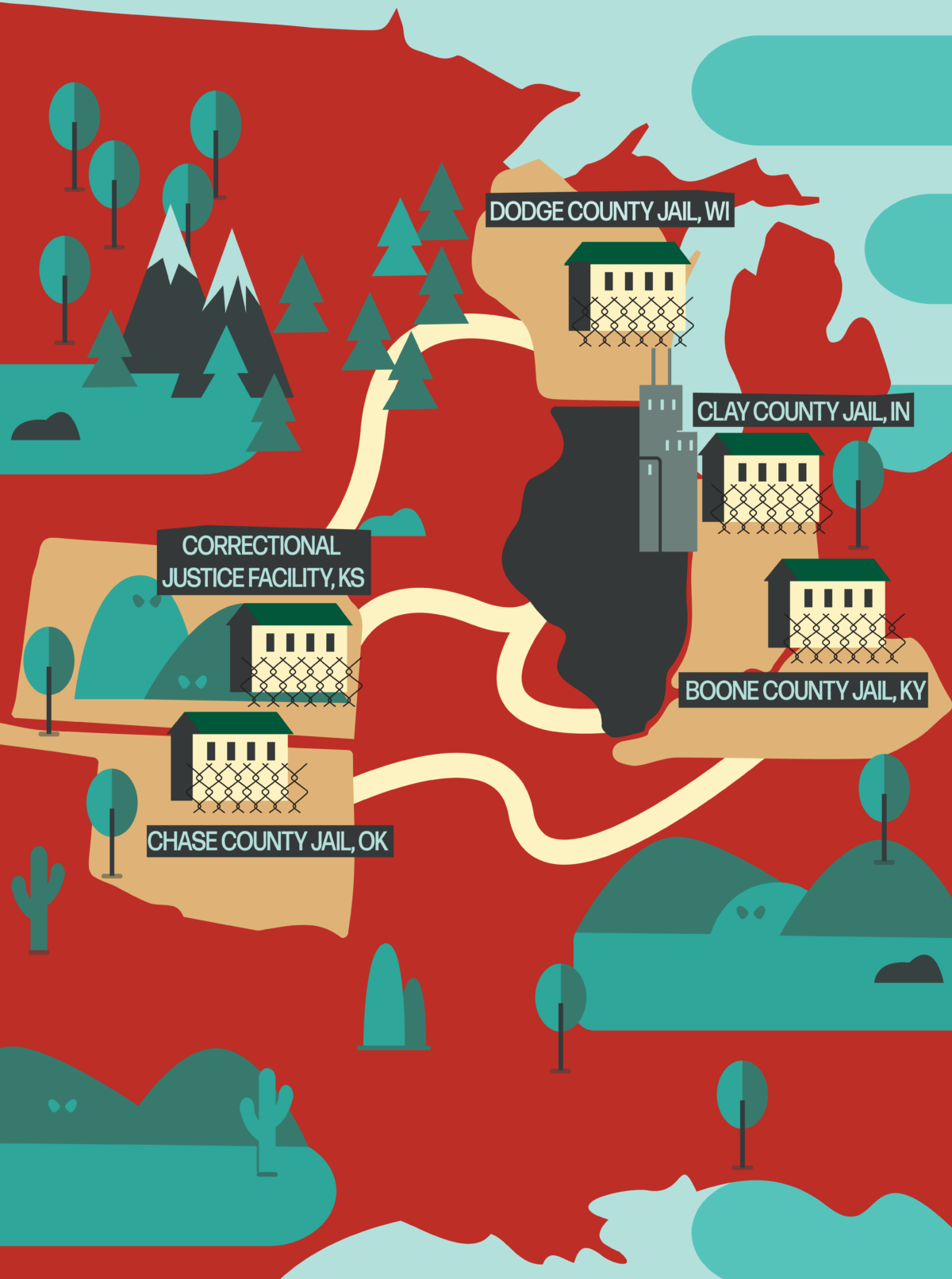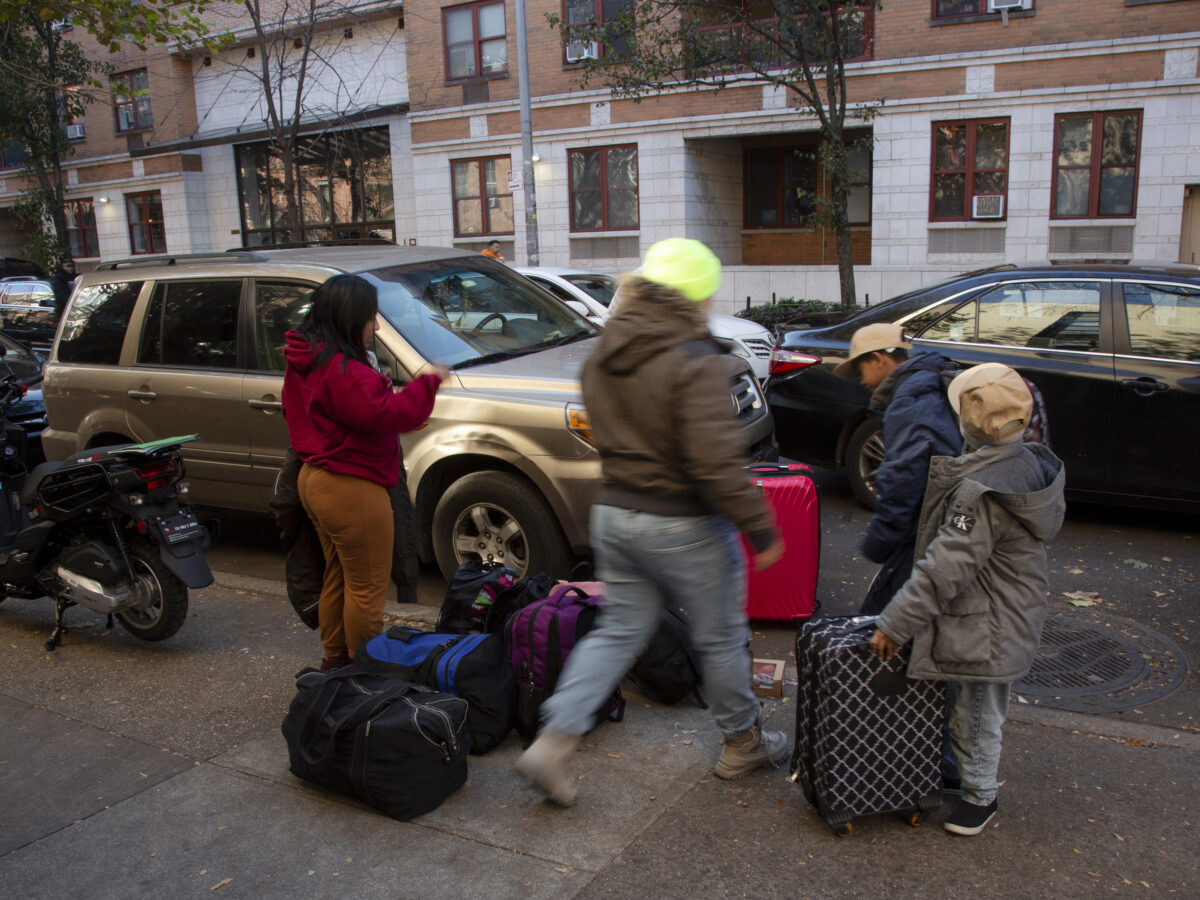Ana Navarro had only been out of prison for three months when Immigration and Customs Enforcement (ICE) detained her. The thirty-one-year-old undocumented resident of Illinois was released for good behavior after serving multiple years for a conviction in a case in which her lawyers say she was herself a survivor of domestic abuse.
ICE agents arrested her in Chicago despite state and local laws designed to protect undocumented immigrants from deportation proceedings.
Agents took Navarro from a halfway house in Grand Crossing to a jail in Juneau, Wisconsin, about 150 miles north of Chicago. In Juneau, the Dodge County jail is one of five facilities where the ICE Chicago field office detains undocumented Illinois residents.
Like Navarro, undocumented Illinoisans are not detained in local facilities because of the Illinois Way Forward Act in 2021, which prohibits using the state’s jails and prisons for ICE’s immigration enforcement. The law also further restricts local law enforcement agencies from sharing information with ICE.
Diana Rashid, a managing attorney at the National Immigrant Justice Center’s (NIJC) Detention Project, said she has seen a reduction in the number of Illinois residents experiencing detention under ICE custody.
“We have definitely seen a noticeable decrease in Illinois residents being detained,” Rashid said.“We attribute that in large part to the closure of Illinois jails because there is overall limited housing space for noncitizens within this area,” Rashid said.
But the Way Forward Act has not stopped ICE from continuing to detain residents of Illinois. The agency has simply found new ways to detain people, often requiring more resources to apprehend people and to take them out of state, Rashid said.
According to Rashid, ICE is also targeting undocumented people who are on probation. Advocates don’t yet know how the agency is locating them, however.
“The probation issue is something we are still trying to get a handle on,” she said. ”Who is making that contact, and how is ICE aware that this person is on probation, or like a supervision appointment?”
Rashid also said she’s noticed that ICE is detaining people right after they have been released from prison.
“We do see a good number of people getting picked up right when they are released, and it is not because we suspect that there is any collaboration between local law enforcement or the state sheriff and ICE, but it is readily available public information” through the Illinois Department of Corrections, she said.
Navarro was on probation when ICE targeted her.
She said she suspects Indiana authorities shared her information with ICE. After she was released from Logan Correctional Center, which is about thirty miles north of Springfield, IL, she initially moved to Indiana to be closer to family. But because that state does not have sanctuary laws that prevent law enforcement from reporting undocumented immigrants to ICE, she returned to Chicago to complete her probation at a halfway house.
But once in Illinois, she received a phone call from a private number. The caller claimed to be a probation officer who wanted to confirm details regarding her whereabouts.
Within three days of arriving in Chicago to complete her probation, and following the phone call from a private number confirming her location, ICE agents arrived at the South Side halfway house and detained Navarro.
ICE agents detained Navarro in February and immediately transferred her to Dodge County Jail in Wisconsin. Upon her arrival, ICE and jail officials provided no further explanations or details regarding her detention. She also had no way of contacting her family and did not know how to use the phone system.
While in detention, a typical day for Navarro began by waking up at 5:30am. She would then put on a wristband, which was used to identify her, and she came out at 6:30am for breakfast regardless of whether or not she wanted to eat.
At Dodge County Jail, Navarro and fellow detainees endured harsh conditions.
“It was always cold there. Always cold,” Navarro said. “They were always running out of sanitary items for females …. They never had enough sanitary pads or anything like that there. They were constantly on lockdown because they were short-staffed or because there was a fight in another pod and we always got locked down for it. The food was horrible. They were trying to say it was healthy but…it was not healthy at all.”
She added that undergarments were frequently returned to women in detention still “dirty” after being collected to be washed every three or four days.
Navarro said she and other detainees experienced racist treatment. Most of the staff did not speak Spanish and she was often asked by officers to translate for those who only spoke Spanish.
Navarro believes detention centers should not exist. Her family brought her to the United States when she was two years old. Despite never having a choice in being an undocumented person in America, Navarro was jailed for eight months simply for being here.
Today, ICE detains Illinois residents and they end up going to Boone County Jail in Kentucky, Chase County Jail in Kansas, Clay County Jail in Indiana, Dodge Detention Facility in Wisconsin and Kay County Detention Center in Oklahoma.
In an email, an ICE official did not directly address whether facilities have interpreters, sufficient staff and why detainees may go on lock down but they said all facilities are evaluated regularly “under ICE’s detention standards, which have requirements for detainee health and safety, legal access, visitation requirements and more.” They also pointed to statistics available on the ICE Detention Management page.
The ICE official did not respond to questions about how ICE may find information about a non-citizen on probation and what technologies they use when they do so but said “ICE conducts an individualized determination in each case to assess whether arrest and removal is warranted. This determination includes an assessment of whether the person is removable under the law, as well as other aggravating and mitigating factors.”
“People may be sent to jails that have newer contracts and therefore a bit more capacity,” said Fred Tsao, the senior policy counsel for the Illinois Coalition for Immigrant and Refugee Rights (ICIRR). “Increasingly they have been using the Kansas and Oklahoma jails for people who might otherwise have been detained here in Illinois.”
Since 2004, as an alternative to detention, ICE has increasingly relied on GPS monitoring, SmartLINK, VoiceID, and Dual Tech to monitor adults released from DHS custody and awaiting conclusions to their individual cases.
According to Alternatives to Detention (ATD) data from DHS, as of October 7, the ICE Chicago field office had 14,065 individuals on electronic monitoring. The majority, 12,832 people, are being monitored by SmartLink, an online tracking device that uses a smartphone or tablet to track individuals.
Navarro was released on bond on October 26 after getting her conviction vacated. It was a risky fight that did not guarantee her release.
“No one should have to experience eight months of detention in order to finally get the chance to fight their case from outside,” said Navarro’s attorney, Olivia Abrecht, an Immigrant Justice Corps Fellow with NIJC’s Detention Project. “That was a horrific thing that she should never have had to go through.”
José Abonce is a Chicago-based freelance reporter who focuses on public safety, politics, race, and urban planning issues. He is pursuing a Master’s in Journalism from NYU’s Arthur L. Carter Journalism Institute.






I’m so glad I found this article. I have a family member who is kept at Dodge county facility. Same thing, was released on probation, maybe 2-3 months later was detained by ICE outside their home in Illinois, and taken to Dodge.